#sashiko
Text
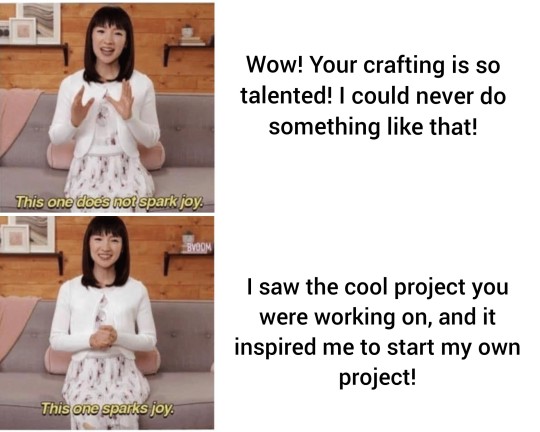
#crafts#crafting#mending#diy#sewing#embroidery#sashiko#visible mending#coworkers misunderstand and try to chastise me for being too humble when i argue with them for saying the top thing#so i made a meme about it#inspiration#?
19K notes
·
View notes
Text
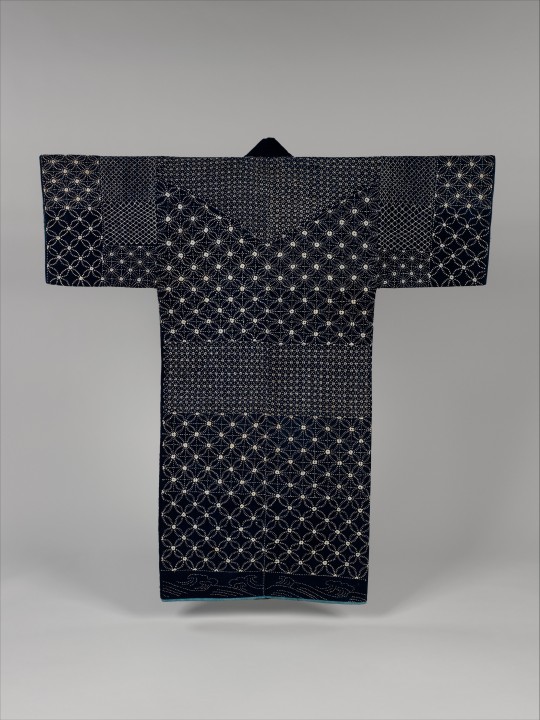
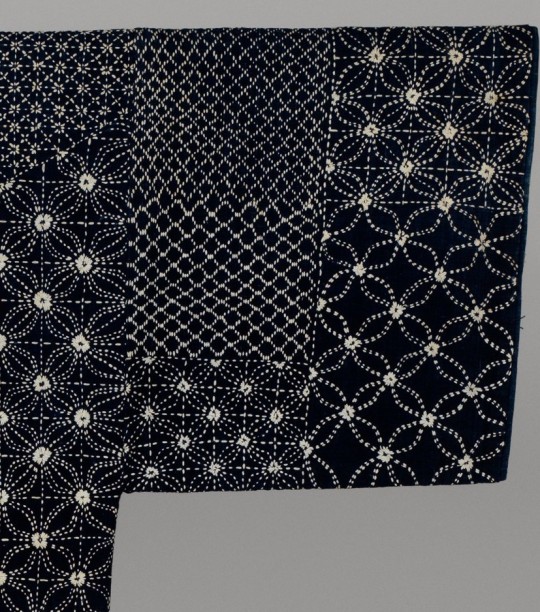
Sashiko Jacket
1850-1899 (Meiji Era)
Japan
Sashiko is a quilting technique that uses a running stitch to reinforce and prolong the life of a textile or to join together recycled pieces of cloth into a new garment. Japanese farmers used the technique to create warmer and more durable fabrics, and decorative sashiko stitching developed from this practical function. This robe’s embroidered design is dominated by three variations on the pattern of interlocking circles, called shippō-tsunagi. The bottom band features a design of waves.
The MET (Accession Number: 67.172.1)
#sashiko#fashion history#historical fashion#japanese fashion#non western fashion#japanese art#19th century#meiji era#quilting#japan#blue#off white#cotton#robe#jacket#1850s#1860s#1870s#1880s#1890s#the met
1K notes
·
View notes
Text

Japanese hikeshibanten jacket depicting spider and go board, 19th Century, Seattle Art Museum
2K notes
·
View notes
Text

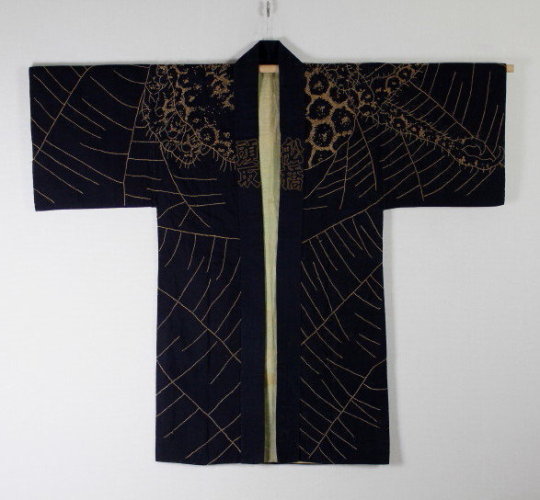
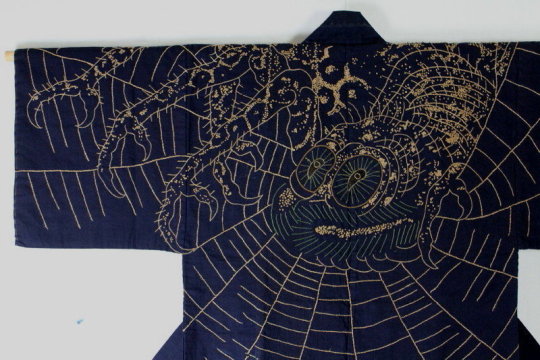


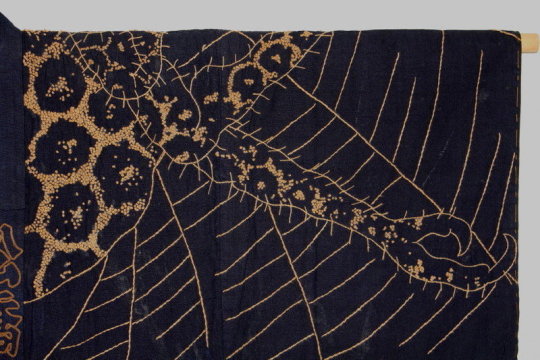

Edo era Sashiko-Embroidered Hanten
#I am floored#spider#embroidery#embroidered#sashiko#sashiko art#hanten#japanese#japan#edo#mid edo period#edo period#garb ref#japanese art#japanese clothing
6K notes
·
View notes
Text

mended my jeans using sashiko and I kinda like how it turned out :)
650 notes
·
View notes
Text
thinking today about how much I love literally all fiber arts. I am hopeless at almost every other kind of art, but as soon as there is thread, yarn, or string I can figure it out fairly quickly.
I learned how to knit when i was eight, started sewing at nine, my dad taught me rock climbing knots around that age, I figured out from a book how to make friendship bracelets, I've made my own drop spindle to make yarn with, and more recently I've picked up visible mending. I've learned embroidery through fixing my overalls, and this year I've learned how to darn and how to do sashiko (which I did for the first time today). After years of being unable to crochet I finally figured it out last night and made seven granny squares in just a few hours.
I want to learn every fiber art that I can. I want to quilt, I want to use a spinning wheel, I want to weave, I want to learn tatting, I want to learn how to weave a basket, I want to learn them all. If I could travel through time and meet anyone in the Bible, high on my list are the craftsmen who made the Tabernacle.
I want to travel the world and learn the fiber arts of every culture, from the gorgeous Mayan weaving in Guatemala, to the stunning batik of Java, to Kente in Ghana. I want to sit at the feet of experienced men and women and watch them do their craft expertly and learn from them.
Of every art form I've seen, it's fiber arts that tug most at my heartstrings.
#Fiber arts#fibre arts#knitting#Sewing#Mending#visible mending#sashiko#Darning#friendship bracelets#Spinning#drop spindle#embroidery#crochet#quilting#Tatting#weaving#basket weaving#Mayan fabric#Kente#Batik
471 notes
·
View notes
Text



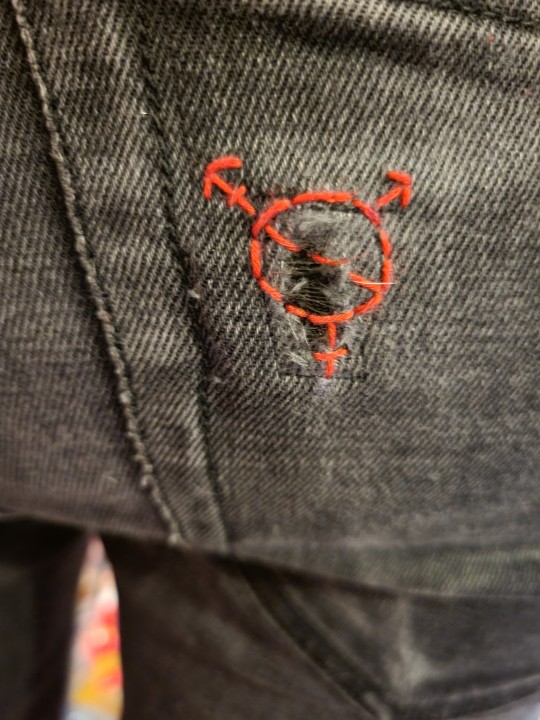
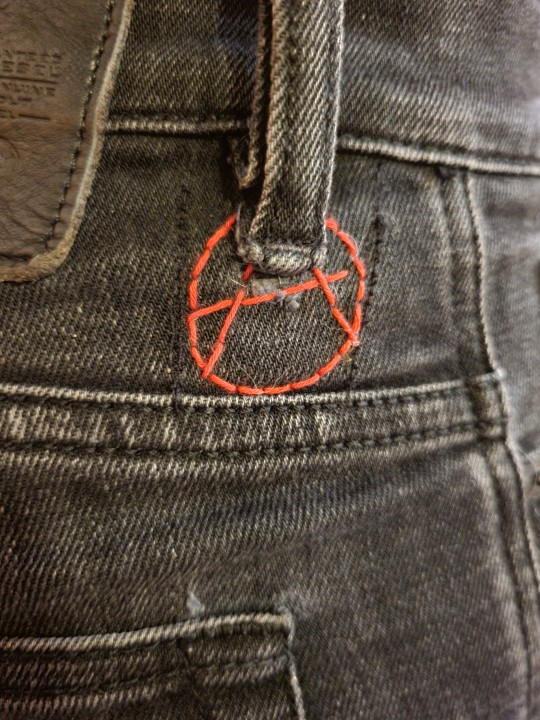
I repaired my jeans with a bunch of embroidery! The knee is done with sashiko and is a lot stronger now, I think I'll go over the back of all the embroidery with fabric glue to hold it in place since I wear these on a regular basis. (ID in alt)
439 notes
·
View notes
Text
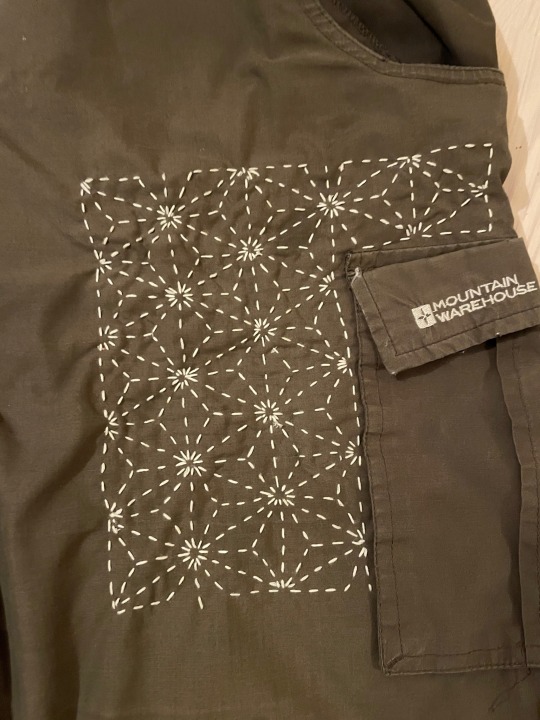
My latest sashiko patch, using the asanoha (hemp leaves) pattern.
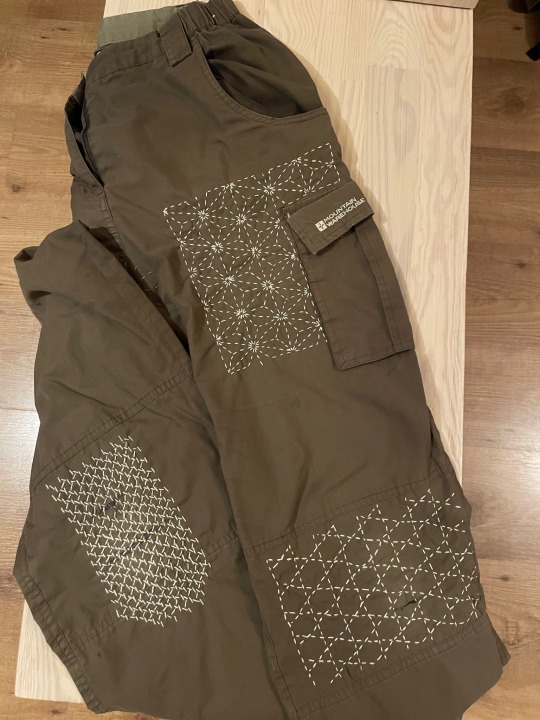
This is the second mend I’ve done using a tissue paper template. See below for details on how it works (or doesn’t - I’m undecided).
1. Pin your patch in place on the inside of the item of clothing.
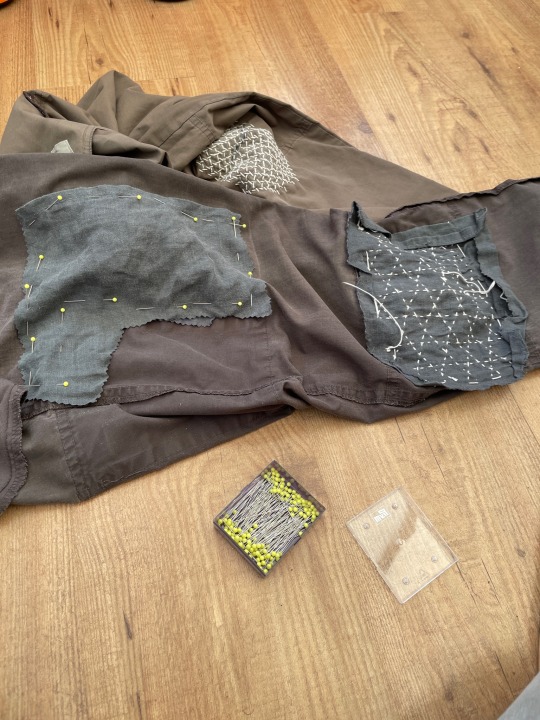
2. Trace grid and design onto tissue paper. My tissue is just scrap from packaging. I traced over a quilting ruler to get everything lined up.

3. Pin in place over the fabric. I didn’t bother removing the original pins, but did leave a wide border round the tissue to help with pinning.
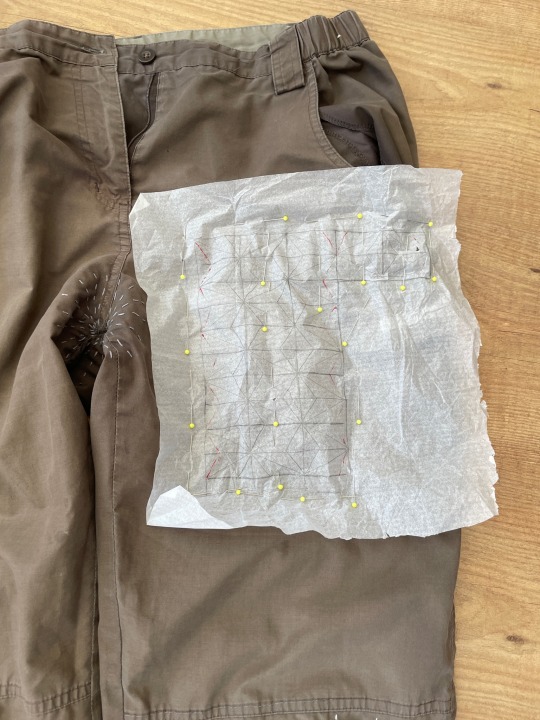
4. Use the pattern guide to sew, stitching through the tissue, original fabric and reinforcing fabric. The tissue will start to tear as you do this. I took out all the pins once I’d stitches all the vertical lines.


5. Peel away the tissue paper and your pattern is revealed! I actually did this a little early, as I had enough lines in place to complete the pattern without a template.
This is the second time I’ve tried this approach. It is really good for getting an accurate pattern - I’ve never had much luck with marking grids straight onto the fabric. However, it does make it really hard to get the fine details right, as the paper obscures them as you’re stitching. That’s why the centre points on my piece look so messy - I just couldn’t see where the other stitches were.
600 notes
·
View notes
Text
Mending soothes my soul when life is loud🪡♻️
457 notes
·
View notes
Text

Punk is going to therapy (I painted over my faded patches)
#diy punk#punk#spechpunkshit#spechshenanigans#punk shit#punk fashion#punk style#punk pants#patch pants#d beat#sashiko#hardcore punk#diy or die
783 notes
·
View notes
Text
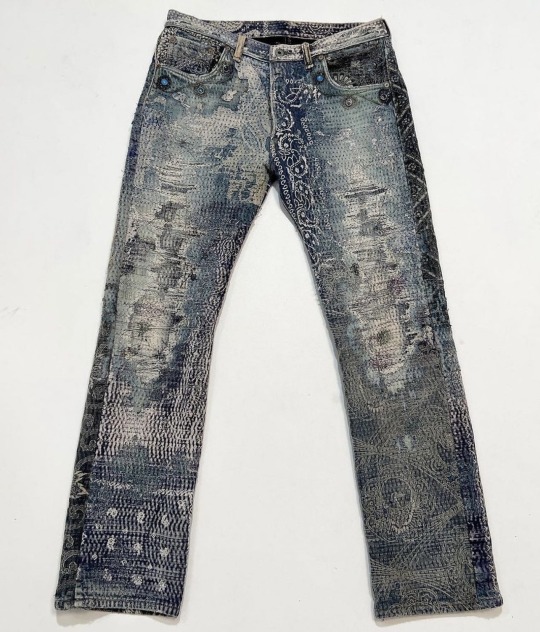
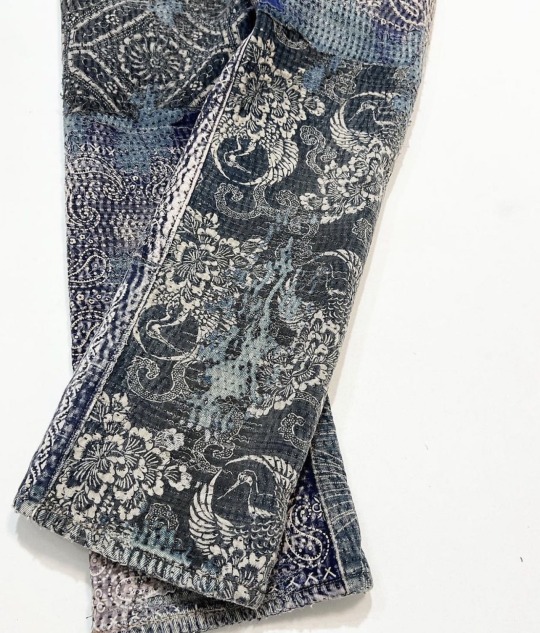
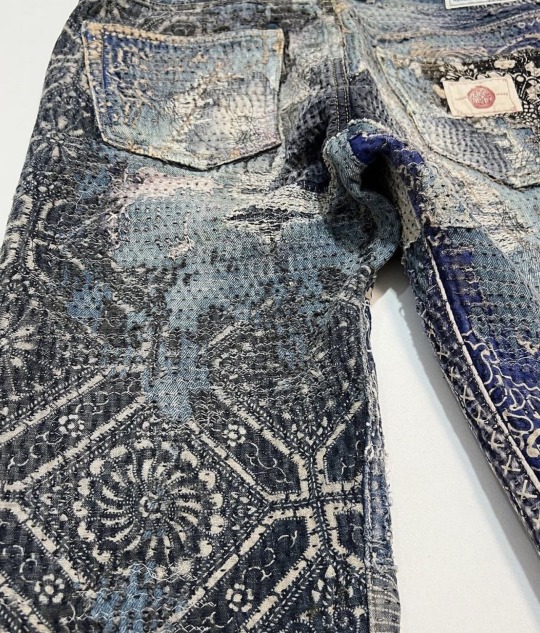

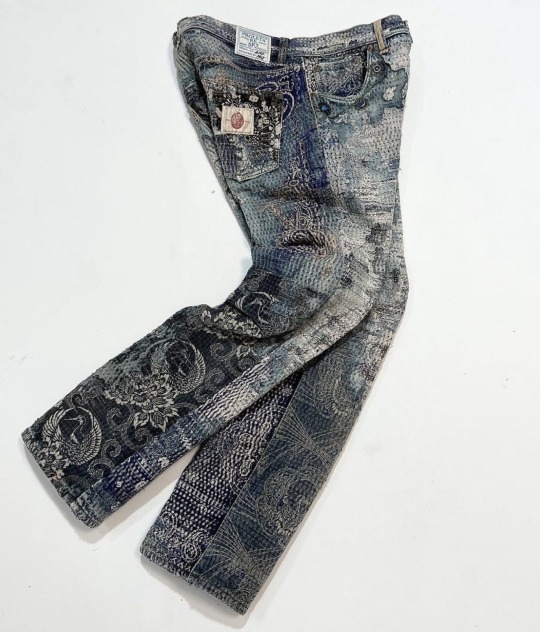
PROLETA RE ART: Uroboros Repaired Denim Jeans Made with Handwoven Japanese Fabric From The Late 1800's (2022)
1K notes
·
View notes
Text
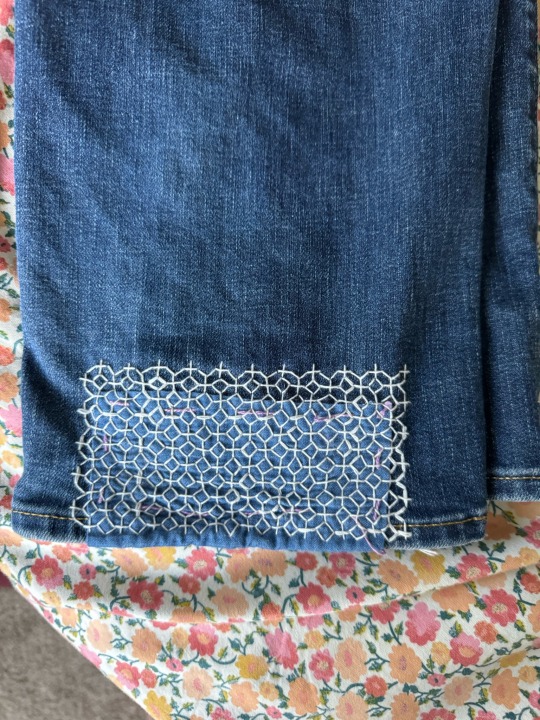

More mending - this time for the heel-bites on my partner’s jeans
These are also a bit of an experiment to compare the durability of the more dense/less dense patterns.
Why so much mending? My mending/alteration basket was full and nothing else could be added, so it was time to deal with the items.
90 notes
·
View notes
Text
Reblog for a bigger sample size
An article so that you can find out about the different kinds of embroidery featured in this poll.
#hand embroidery#online embroidery resources#craft poll#cross stitch#hardanger#stumpwork#crewel embroidery#drawn thread embroidery#sashiko
170 notes
·
View notes
Text

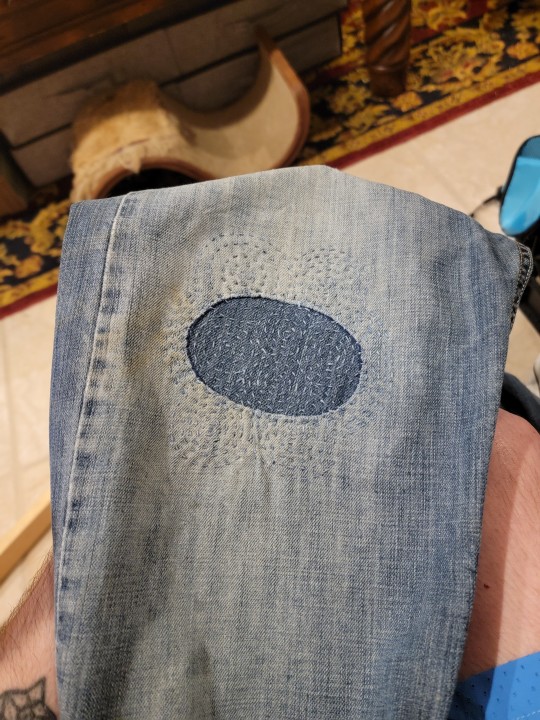

Trying to get serious about slow fashion by tackling my mending pile. One leg down, one to go on a pair of now hard-to-find 100% cotton Levi's.
#slow fashion#visible mending#sashiko#my stay stitching is showing which guves the patch a weird inset look lol#once I am sure I have a good New England wardrobe I want to stop buying clothes for a few years#well except for cosplay lol
338 notes
·
View notes
Text
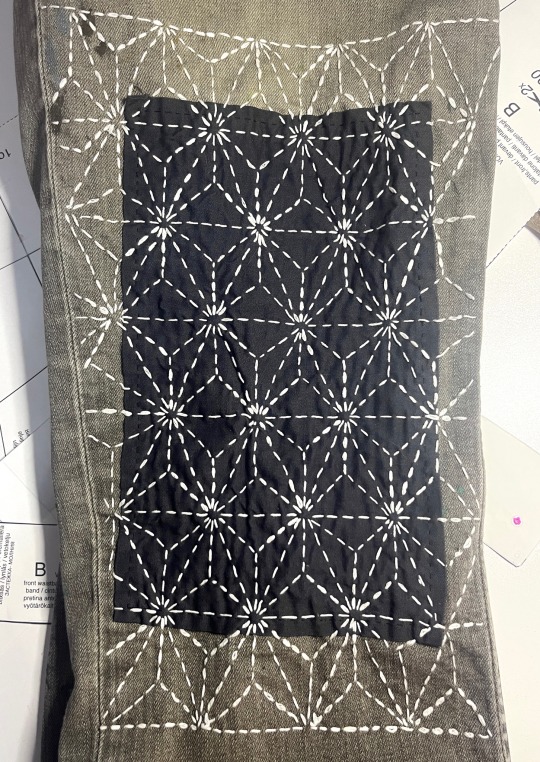
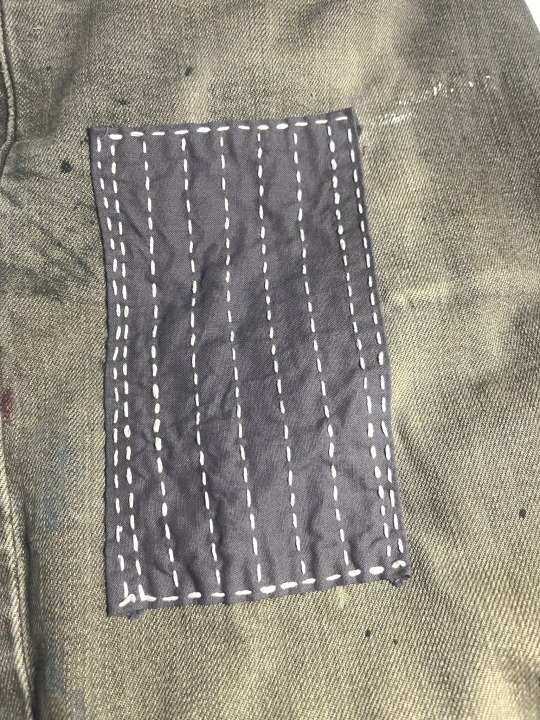
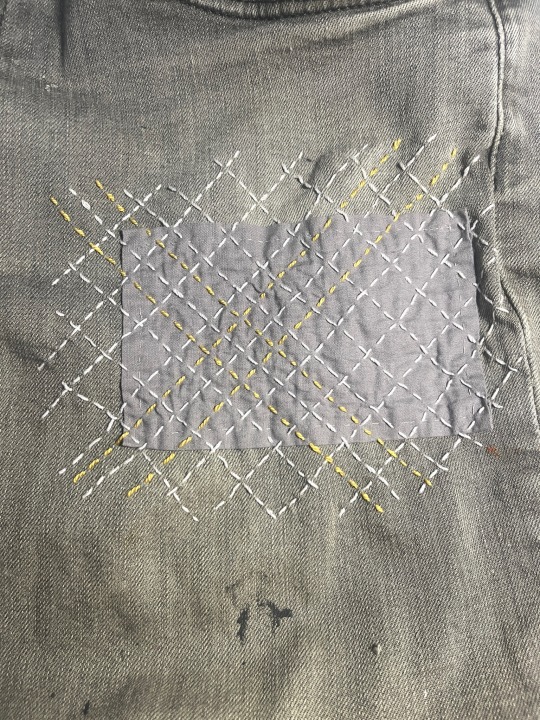
More sashiko inspired patches and mending!
I didn’t know that the traditional way to do a sashiko mend is to stitch the patch with the pattern and and then attach the patch to the clothing… but i still think it looks really cool! And it should still be plenty strong lol.
#sashiko stitching#sashiko#sashiko mend#visible mending#mending project#mending#hand sewing project#sewing project#diy mending#sustainable fashion
180 notes
·
View notes